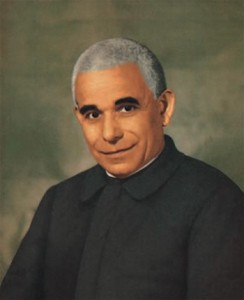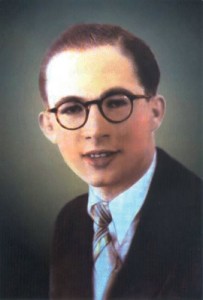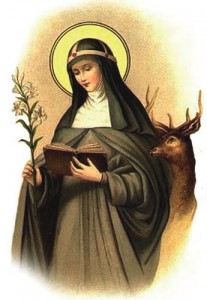March Saints
 Saint Luigi Orione (1872-1940)
Saint Luigi Orione (1872-1940)
St Luigi Orione was born at Pontecurone, Italy, in 1872 and displayed a remarkable piety at a very young age. When he was thirteen, he entered the Franciscan Friary of Voghera, but he left after one year because of poor health. In October 1886, Luigi went to St John Bosco in Turin, was present at that saint’s death and his illness was cured.
Entering the seminary in Tortona, Luigi was ordained on 13 April 1895. As a seminarian he had been an active member of the St Vincent de Paul Society and other charitable organisations, opening in 1892 an oratory to provide for the Christian training of boys and in 1893 a boarding school for poor boys. He was a true son of Don Bosco – gentle, joyful of spirit and caring. Inspired by a profound love for the Church and for the salvation of souls, he was actively interested in the new problems of his time, such as the freedom and unity of the Church, modernism, socialism and the Christian evangelisation of industrial workers.
From 1899, Don Orione founded the Sons of Divine Providence (priests, lay brothers and hermits), the Little Missionary Sisters of Charity, the Blind Sisters, Adorers of the Blessed Sacrament, and the Contemplative Sisters of Jesus Crucified. For lay people, he set up the associations of the Ladies, Former Pupils, and the Friends of Divine Providence. More recently, the Don Orione Secular Institute and the Don Orione Lay People’s Movement have come into being. All of these have the same founding charism: to bring the little ones, the poor and the people to the Church and to the Pope by means of the works of charity. In the first Constitutions of 1904, there also appears the goal of working “to achieve the union of the separated churches.”
Don Orione was a preacher, confessor and tireless organiser of pilgrimages, missions, processions and other celebrations of the faith. He loved Our Lady dearly and fostered devotion to her by every means possible. Far from staying at the headquarters of his congregation, he made missionary journeys to Latin America and to new foundations of his works.
In the winter of 1940, struggling with heart and lung complaints, he went to the San Remo house, where he died three days later, hailed as a giant among the apostles of charity, serving as an outstanding sign of Christ in the modern world and the bearer of Christ’s redemptive mercy.
Saint Luigi, inspire us to give ourselves joyfully to the service of the poor and disadvantaged.
(Source: Internet – various)
 Blessed Marcel Callo
Blessed Marcel Callo
(1921-1945)
Marcel Callo was born in Rennes, France, in December 1921. Growing up in a religious family with many brothers and sisters, he became a printer in his home town, where he was very active leading a group of the Young Christian Workers’ movement.
When the Nazis invaded France, Marcel and some friends helped many people to escape the Nazis to non-occupied French territory.
In March 1943 he was ordered to do (civilian) forced labour in Germany, regarding it as a mission to help the many others who were also deported to Germany. At the Walther arms manufacturing plant, he organised religious services and a group of Christian activists among his comrades.
The following year, Marcel became imprisoned at Gotha, Germany, and was deported to KZ Gusen concentration camp. Soon exhausted and seriously ill, he vegetated in the filthy and overcrowded camp “hospital” for a while. When his health became worse he was transferred back to Mauthausen central camp where he died of exhaustion on 19 March 1945.
Blessed Marcel, keep us true to our Christian commitment.
(http://www.nizkor.org/hweb/camps/gusen/pers/callo01x.htm)
 Saint Catherine of Sweden
Saint Catherine of Sweden
(c. 1331-1381)
Catherine was the fourth child of Saint Bridget of Sweden and married Eggard von Kürnen. He died while Catherine was in Italy with her mother, and henceforward for twenty-five years, the lives of the two women were practically identified in charitable works, pilgrimages, and the welfare of the Bridgettine Order.
After the death of her mother, Catherine retired to the abbey of Vadstena, taking on the mammoth task of forming the community in the rule her mother had written and earning there a reputation for holiness and miracles. After some years, she returned to Rome to work for her mother’s canonisation. She died in Sweden in 1381 following a painful illness.
Saint Catherine, teach us true devotion to the poor.
(Source: A New Dictionary of the Saints, Donald Attwater. 1993 Burns & Oates, Kent)
 Entries(RSS)
Entries(RSS)